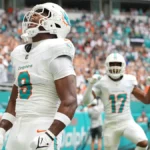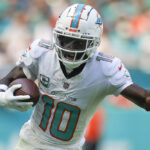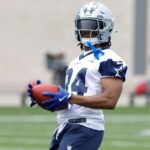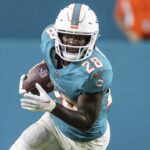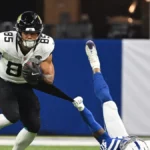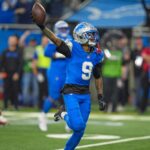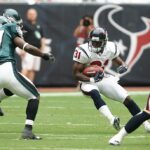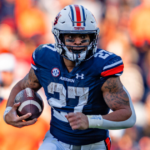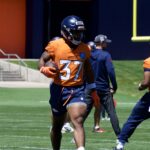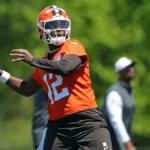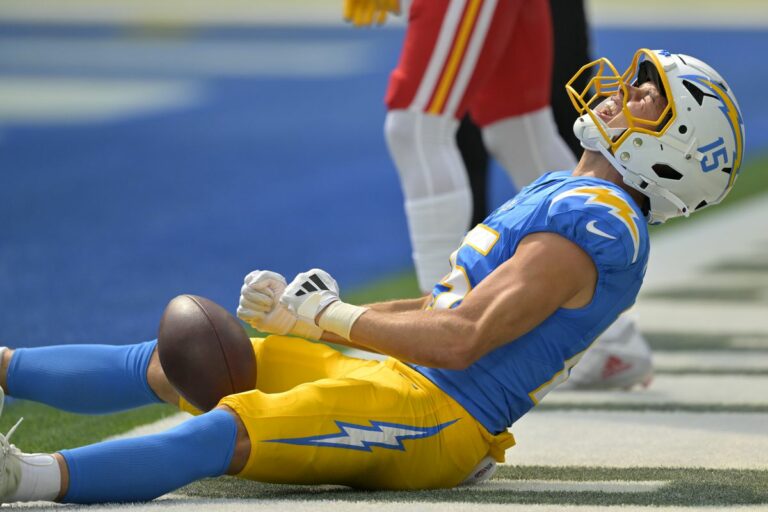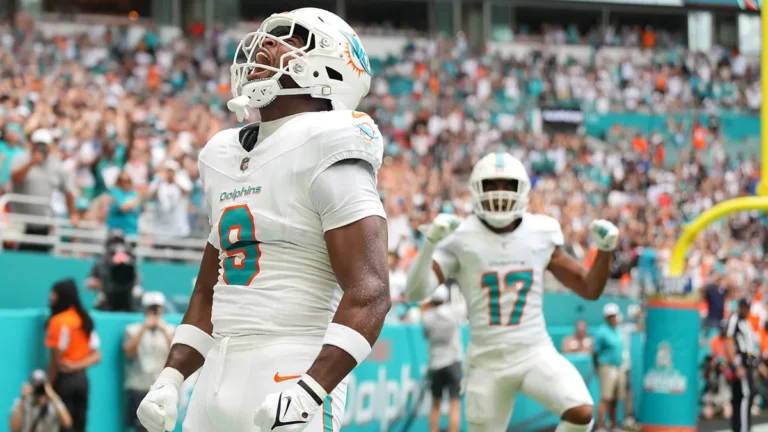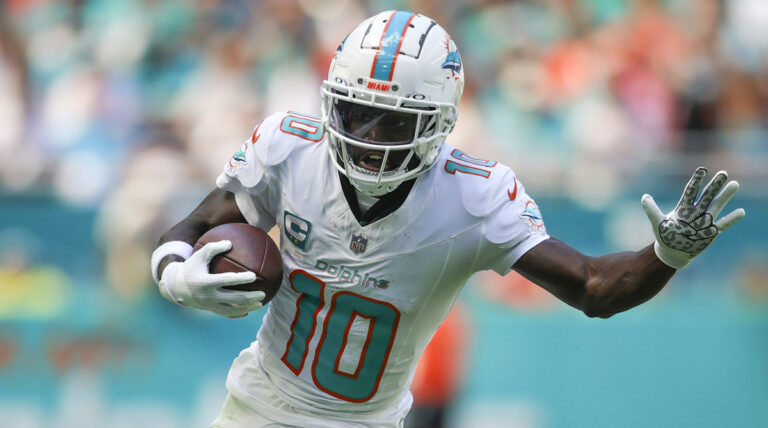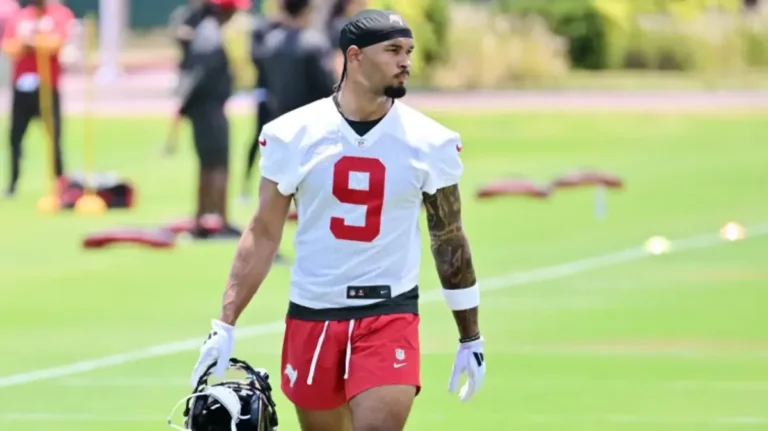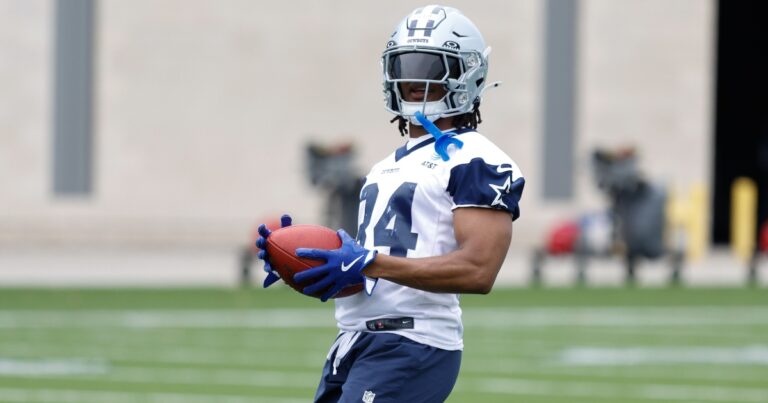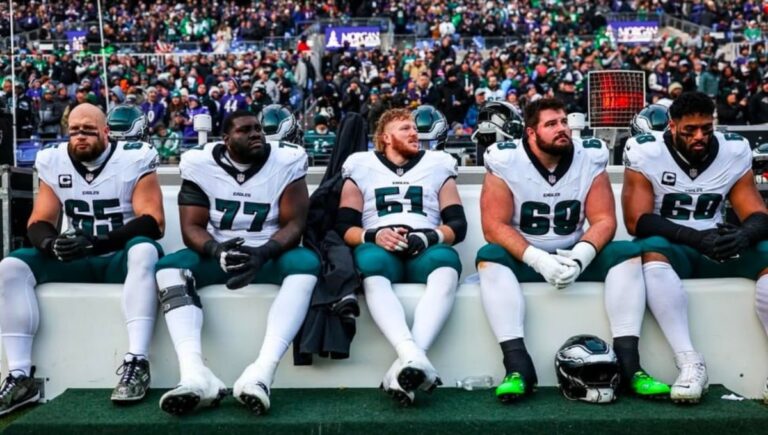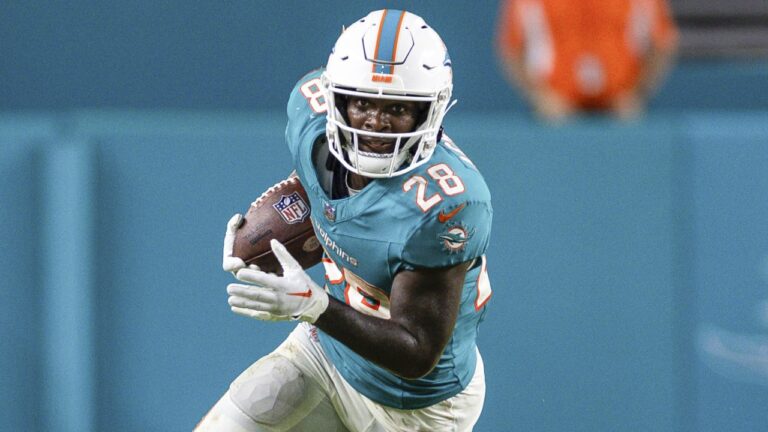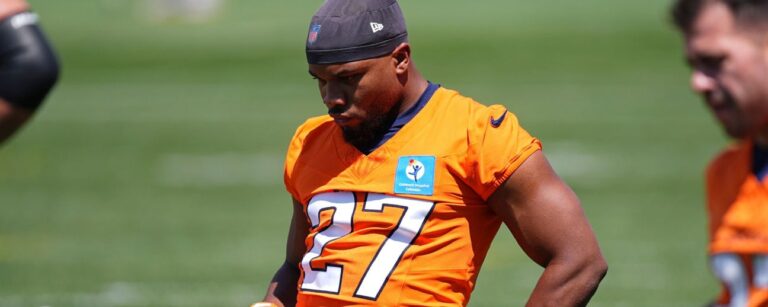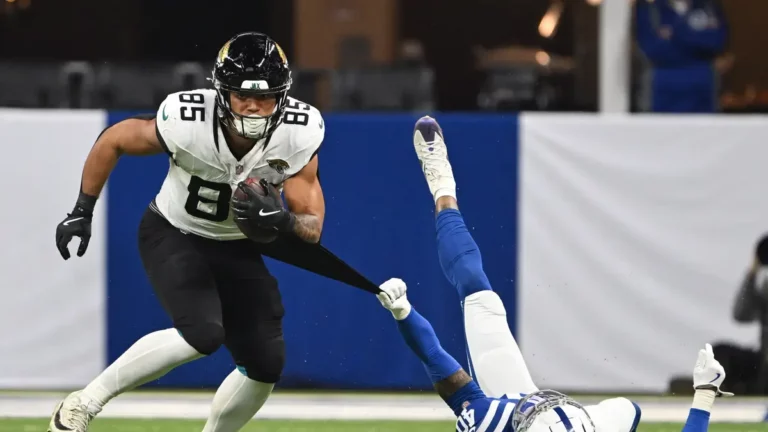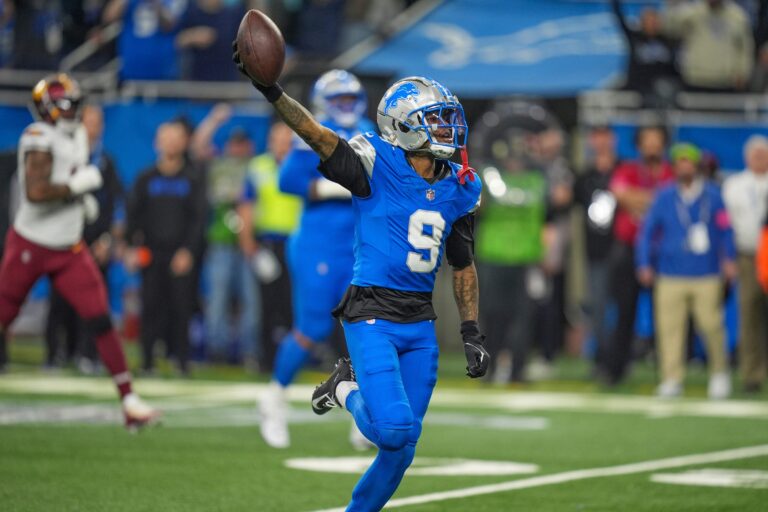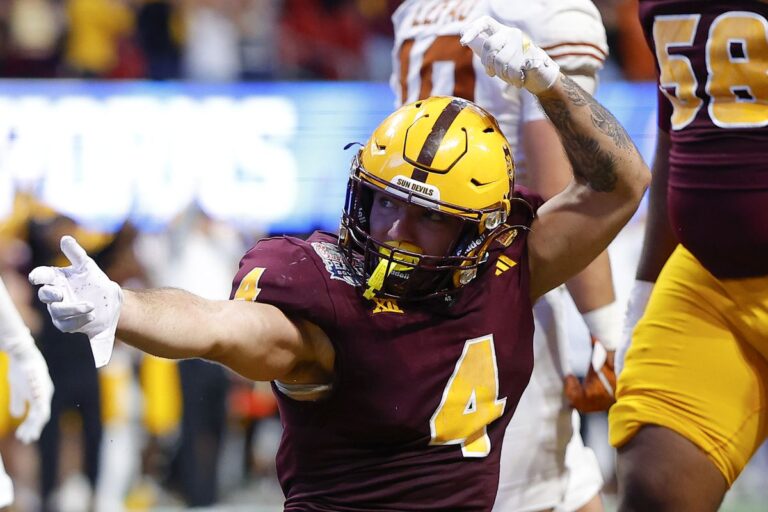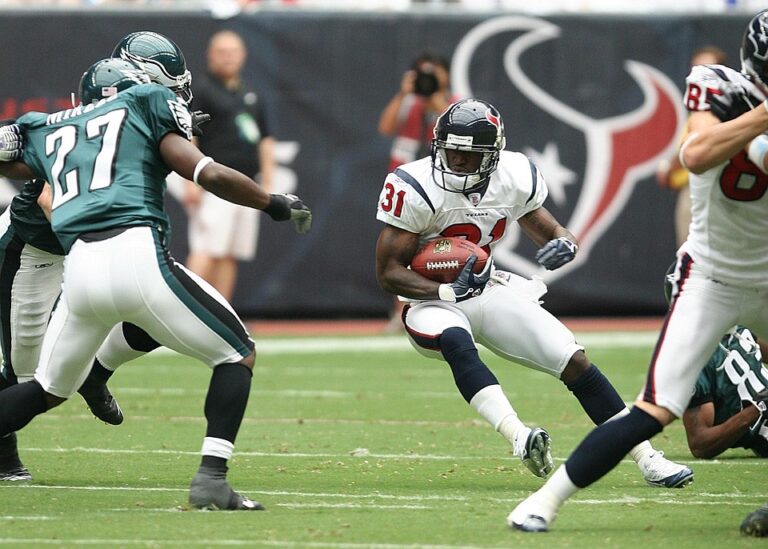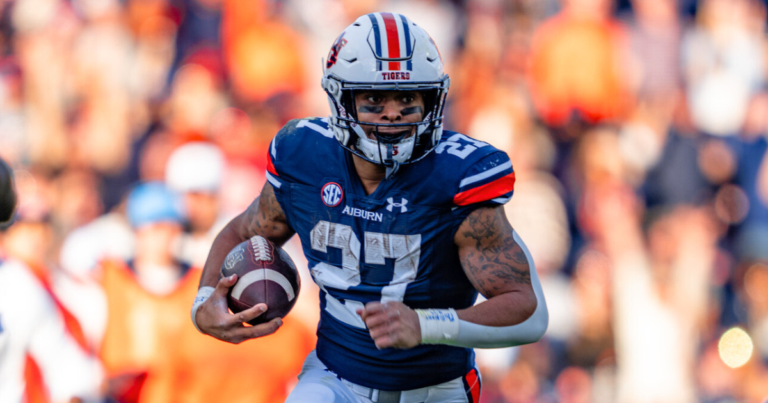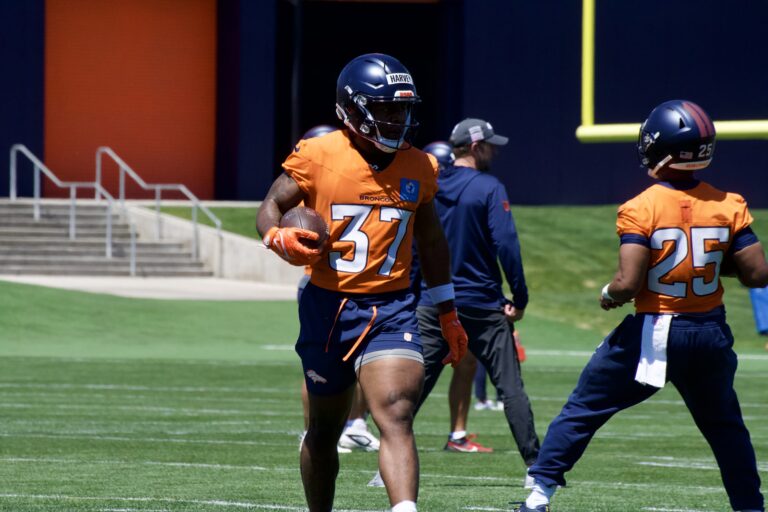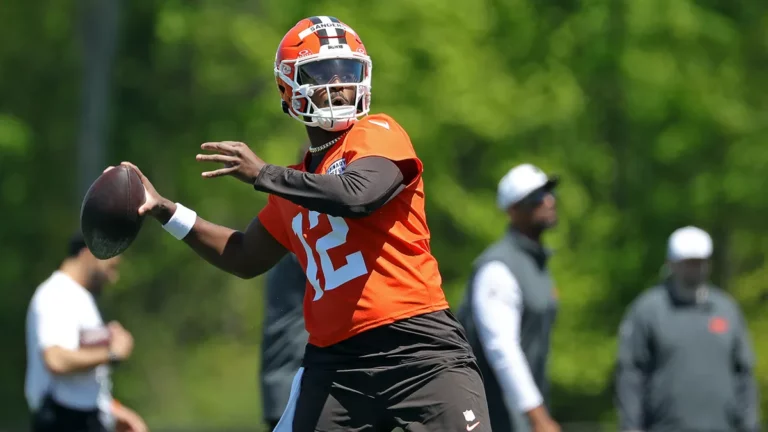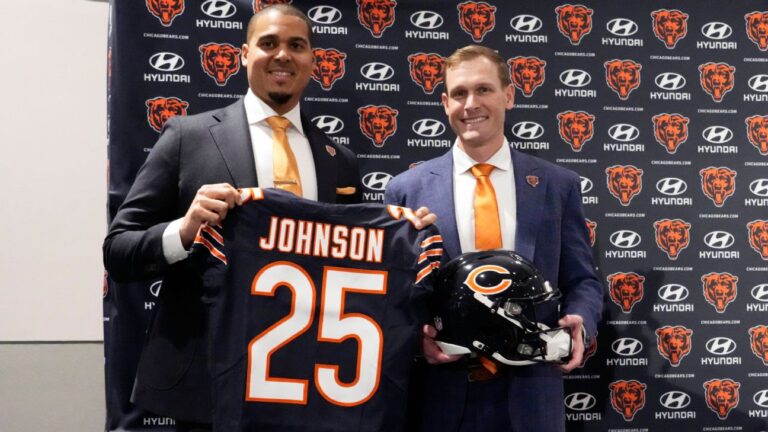If you haven’t read part 1 of this series, please click here. Part 1 includes an overview of my fantasy football auction draft philosophy, plus an amazing tool (via Excel / Google Sheets) to help you set the perfect player prices.
Now that you’ve set the perfect 2020 fantasy football auction player prices — customized with your league settings/history and value-based drafting — it’s time to come up with a league-winning auction gameplan. Below, we use our pricing tool to form a “blueprint,” analyzing how to attack and budget for each position.
Overall View and Trends
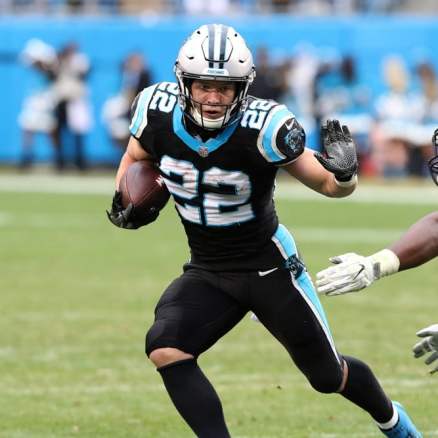
The first thing I like to do after inputting my league rules and site-specific numbers is to look at the Auction sheet for a few minutes. Scroll through the list and see if any of the values are particularly different from what you were expecting. You will probably find a few that pop out.
All the following screenshots (zoom in) and analysis are based on a 10-team PPR league on ESPN. Your league might different, so the goal of this series is to teach you how to analyze any set of data and come up with your own conclusions. Read part 1 to learn how to customize the tool to your league settings.

Two things jump out at me:
- Christian McCaffrey looks like a HUGE value. Even though projections will not perfectly reflect reality, McCaffrey still has a massive $23 margin of safety between his projected value and ESPN Average Auction Value (AAV), and we have all seen McCaffrey’s earth-shattering upside.
- In general, the highest-value players, especially RBs, seem to be undervalued. Nine of the eleven highest-value players have a positive site skew value in column L, which means their true value is greater than their ESPN AAV. Finding league-winning players is much easier in the first round of your draft, so grabbing 1-2 of the top-ranked “sure things” in this range makes a ton of sense.
After scanning the data overall, I like to filter the Auction sheet by position (see: POS Tab, second in from left, and filter) to spot any position-specific trends.
QB Position Breakdown

Summary: Save $$ here for RBs by punting and streaming, or plucking a nice mid-tier value if Dak, Kyler, or Allen slip in price.

The first thing that jumps off the page is almost every quarterback has a positive site skew. I can think of three reasons why:
A) QB Streaming is a great way to save on money, for similar fantasy points. The model takes projected season-long stats and assigns a single value to each player. For example, if you draft Matt Ryan and Carson Wentz, the model assumes that you start Ryan each week because he is projected more points for the season.
However, most savvy owners “stream” QB based on matchups, rather than lock in a single guy. Except for the truly elite, streaming almost always guarantees a higher share of “QB points” over the course of the season than you would with, say, Ryan or Wentz alone.
This decreases the value of top QBs because of the opportunity cost. You can almost always get similar points from 2-3 cheap options as those of the QB5-10. Instead of wasting valuable budget that could be used to secure multiple workhorses or CMac, paying up for a “onesie” QB position can really hurt your auction flexibility.
Two-QB leagues are of course different – just adjust the settings in the tool to see their prices sky-rocket.
B) QBs are often nominated late with budgets low. Multiple drafters will spend all their money early in the draft. If some teams are out of money before all the QBs are drafted, QB AAVs will naturally be lower. I will touch more on budgeting strategies in parts 3 and 4, but you should generally save a few dollars to snag bargains late in the draft.
C) Data suggests that QB projections are less reliable than other positions. A recent article studied how reliable projections / ADP are compared to the actual fantasy results. Ultimately, Top-24 QB projections were significantly than top-48 RBs or top-48 WRs from 2011-2017. This is represented by the “R2 values” — when higher, the projections are more reliable:

In addition to being a streamable “onesie position,” QB projections are often far less accurate than the other, more valuable roster spots.
Even though almost every quarterback has a positive site skew, Dak Prescott stands out as the best value with a $7 AAV and a true value of $24. If “paying up,” he’s the play. Other mid-tier QBs like Russell Wilson, DeShaun Watson, Kyler Murray, and Josh Allen also look like good values if they fall under $10.
Ultimately, the main takeaway: avoid overpaying for Lamar Jackson and Patrick Mahomes. Their site skews are significantly less than the mid-tier QBs, especially Dak, and the ability to stream the position decreases their values even more. Drafting Jackson or Mahomes could pay off if they blow up for historic totals again, but the data suggests that spending on other positions will net a greater expected return.
Wolf’s Take: I budget $4-5, at most, for QBs, and always snag two $1-3 guys late in drafts to stream. This year, give me Teddy Bridgewater for $1 and then one of Matthew Stafford Cam Newton, Daniel Jones, Ryan Tannehill… hell, even Drew Lock. Save up here to spend elsewhere.
RB Position Breakdown
Summary: Budget a huge portion in for RBs. Pay up for McCaffrey. Secure at least 2 RB1s, if not three.
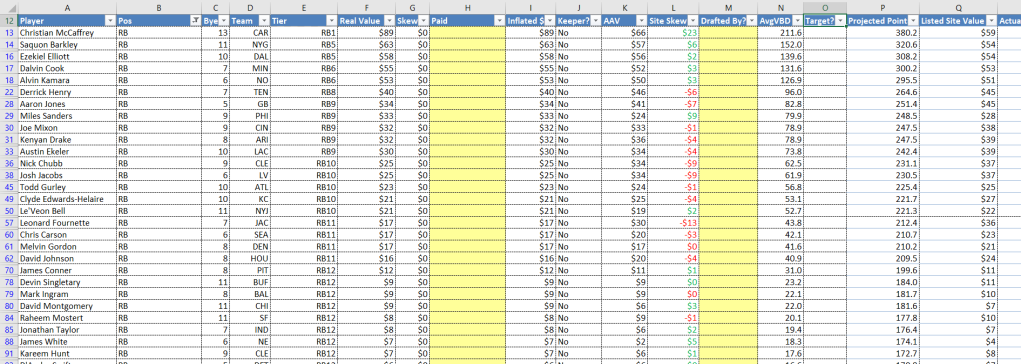
At first glance, the running back position seems fairly valued by ESPN drafters with an even mix of positive and negative site skew. McCaffrey stands out as the best value and someone I would target, and the backs projected in the RB1 range look like better values than the RB2s. Given this data, it would be extremely hard for me to leave the draft without McCaffrey. Even with the highest price by nearly $10, McCaffrey’s ceiling and floor are being undervalued.
Even if all players were valued perfectly by the site I was playing on, I still would try to target at least one top back because my preferred strategy at running back is bell cow or bust. I want players who have the best chance of dominating their team’s rushing and receiving share.
Running back production also tends to drop off more quickly than wide receiver production as you move down the list of players, so locking up 2+ elite backs gives your team a massive advantage at the most important position in fantasy. I would target another back in the RB1 range to pair with McCaffrey because that is where the most favorable values lie.
High-end backs are very expensive, but I am willing to spend on them because I know I can find cheaper players at other positions to fill out my roster. If you play in a larger league, two elite backs might be too expensive, so I encourage you to download the tool and check out custom values based on your league settings.
Wolf’s Take: Fully agree. Secure, at minimum, 2 bellcows. I even like aiming for three of the “late first, early second” tier of Austin Ekeler, Miles Sanders, Kenyan Drake, Nick Chubb, and Josh Jacobs if they’re falling in price. You can fill in QB, WRs, and TE given all the depth at those spots
WR Position Breakdown
Summary: After paying up for RBs, target the mid-tier WRs, finding 5-6 you’d accept as your Top-3 WRs and plucking the top values. Then, load up on high-upside, low-cost “Penny Stocks” or underappreciated upside veterans like John Brown and Marvin Jones.
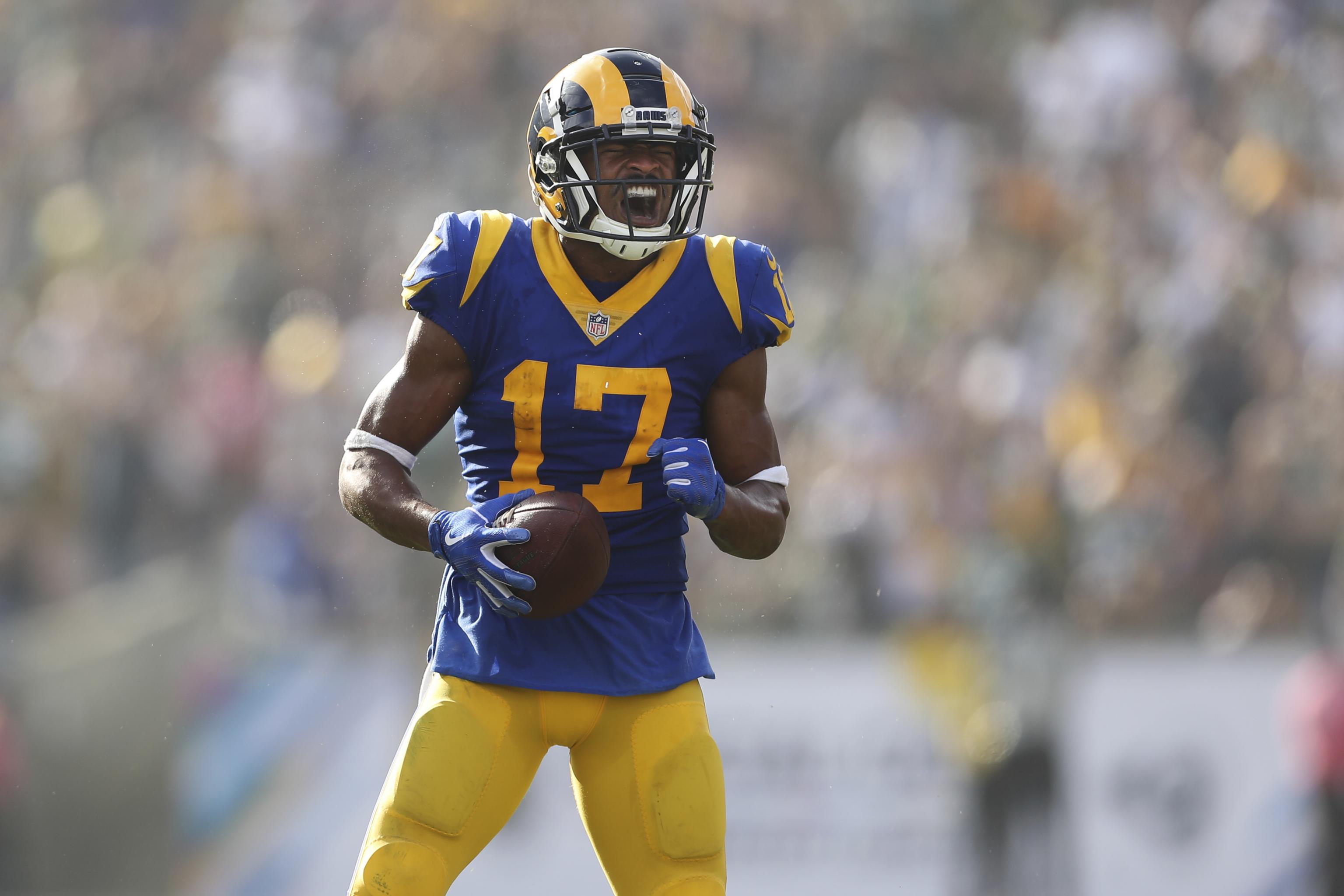
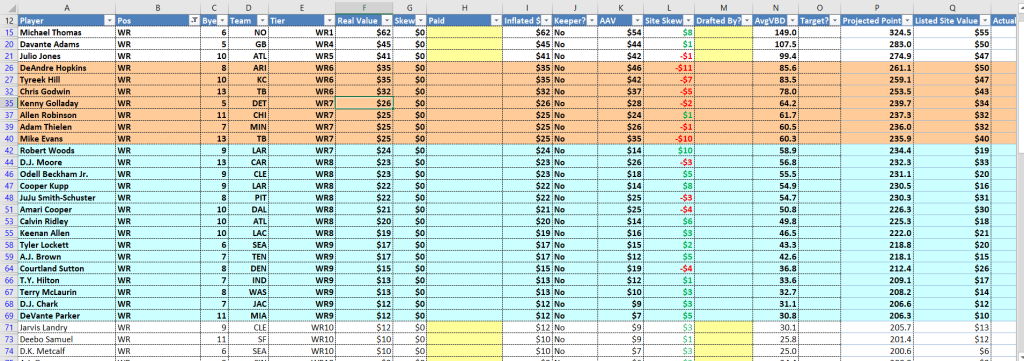
The group of wide receivers between WR4 and WR10 looks overvalued by ESPN AAV. They are still good fantasy assets, but wide receiver is a very deep position, and the drop-off is less severe than running back. In this dataset, the RB1 (McCaffrey) is worth $89, and the RB25 (Mostert) is worth $8. The WR1 (Thomas) is worth $62, and the WR25 (Parker) is worth $12.
Because the wide receiver position is deeper than running back in PPR leagues, drafting a receiver to start in your flex spot is almost always the best strategy… if you don’t secure three bellcows per The Wolf’s recommendation.
Check cell A11 on the LeagueInfo sheet. Based on my league settings, 10 QBs, 20 RBs, 20 WRs, and 10 TEs (60 non-flex) must be started in addition to the 10 flex spots, for a total of 70 starters.

After assigning the first 60 non-flex starters, the tool assigns the remaining 10 best flex-eligible players as flex starters. Since the tool shows 29 starting receivers and 21 starting running backs, 9 of the top 10 remaining flex-eligible players are receivers. Drafting a receiver at flex makes sense in this league, but check the LeagueInfo sheet after inputting your custom settings.
Investing in high-level assets like McCaffrey at running back and loading up on your favorite receivers in the WR11-WR25 range seems like a solid strategy here. In general, I would prefer to invest more assets in the running back position even if the site AAV perfectly matched the real value for every player.
Since the top backs and mid-tier receivers also have favorable site skews, building a team around these players is even more enticing. However, if you love one of the top receivers and prefer to only spend on one top back, adding a top receiver makes sense here.
Wolf’s Take: Midtier WRs are LOADED with upside this year, but come at $15-20 discounts. Pluck the values there for your starters, then load up on undervalued assets like Marvin Jones and John Brown.
TE Position Breakdown
Summary: Like QB, take 2-3 cheap “stabs” at the end of the draft (Noah Fant, Jonnu Smith), hoping one ultimately pans out.

The tight end data looks very similar to the quarterback data. Almost every player has a positive site skew, and this makes sense because, as a “onesie position,” many of the same reasons apply:
- You don’t have to start the same TE every week. Technically, you could stream tight end, but doing so is very difficult because the player pool is shallow. A more viable strategy is to draft 2-3 high-variance players, hold onto them for a couple of weeks, and drop the ones who don’t perform. Some names that fit the bill are Hayden Hurst, Mike Gesicki, Noah Fant, and T.J. Hockenson. This strategy certainly has risk, but it only costs bench space and is much less risky than drafting a single unproven tight end and relying on them alone.
- Most of these players are nominated late. This is the same for quarterbacks. When teams run out of money, players nominated at the end of the draft will be cheap.
Unlike Dak at quarterback, I don’t see a single tight end that stands out as a great value. Even though most have a positive site skew, the tight ends are fairly priced relative to each other. If you have room in your budget and want to get a top tight end, go for it. If your budget is tight and you’re willing to take some risk, 2-3 cheap breakout candidates could give you great production for little cost. A mid-tier guy could also work here.
Wolf’s Take: Aim for “2020’s Mark Andrews” and punt. Like QB, I’ll take 2-3 late stabs and hope one pans out big.
Summary
After breaking down the data by position, my initial plan would be to draft two high-end running backs, three mid-tier wide receivers, and a quarterback and tight end I could afford after that. A sample starting lineup I like would be something like:
QB: Dak Prescott $7
RB: Christian McCaffrey $66
RB: Alvin Kamara $50
WR: Robert Woods $14
WR: Odell Beckham Jr. $18
Flex: Calvin Ridley $14
TE: Mark Andrews $11
Total: $180
If you don’t like the particular players I selected, that’s okay!
You can swap them for comparable alternatives and end up with a team you like better.
Similarly, if a few players go for more than expected, I can plug in alternatives. This team should leave me with around $20 to draft a few bench players I like. I would be unlikely to finish my draft with this exact roster, but in many drafts, I could build a similar team.
Stay tuned for Part 3 of the series, where I outline how to develop a more comprehensive draft plan to prepare for any draft day scenario. The team I put together above would work if everything goes according to plan, but no auction draft goes exactly according to plan. Backup plans are extremely important because you don’t want to be in panic mode when your only plan fails!
Our Auction Series is all you need to dominate your 2020 Fantasy Football Auctions. Don’t miss a single part:
- Part 1: Customizing Player Prices
- Part 2: Initial Game Plan and Budget by Position
- Part 3: Map out Audibles
- Part 4: In-game domination


